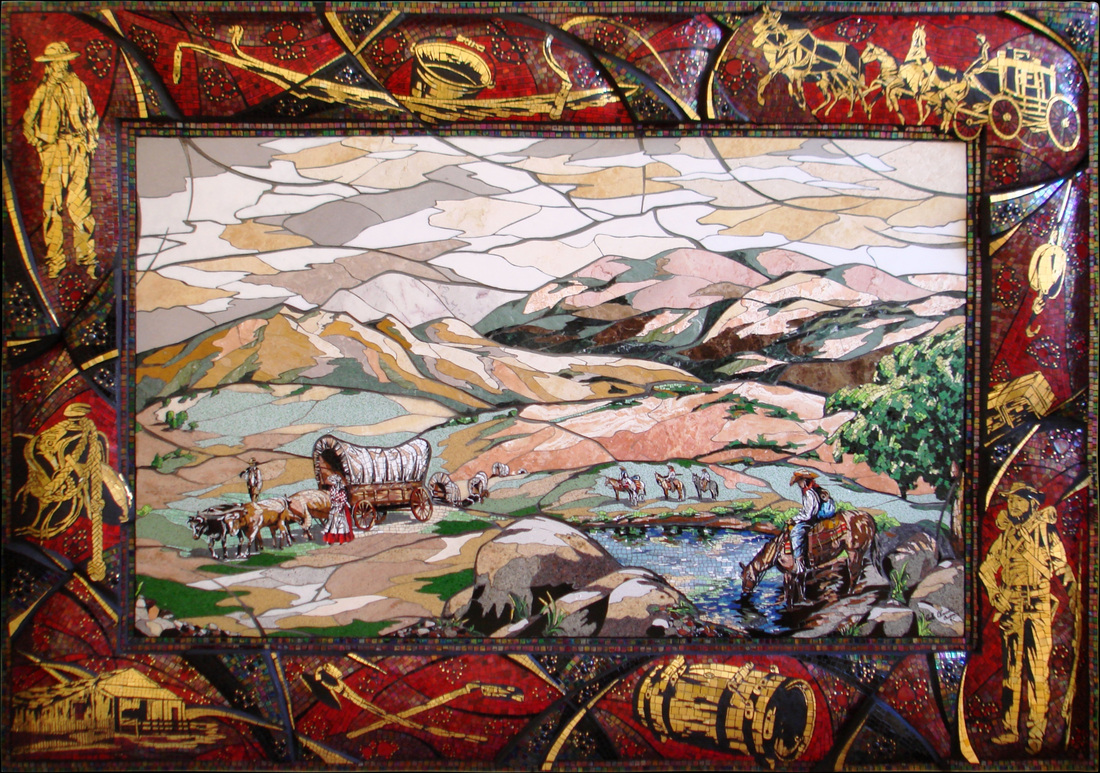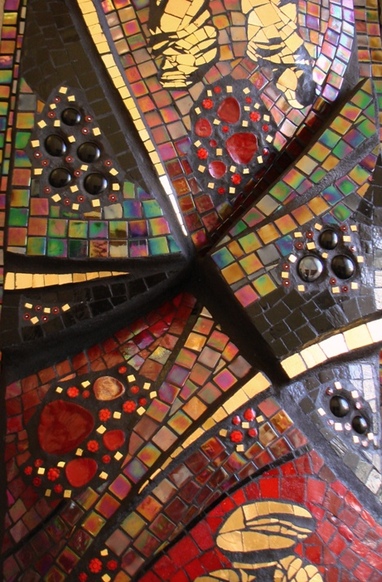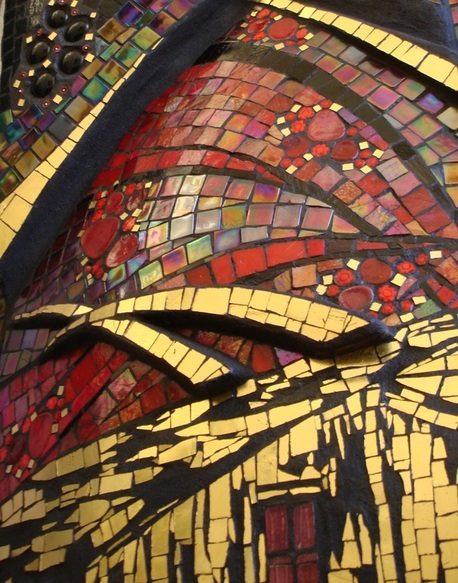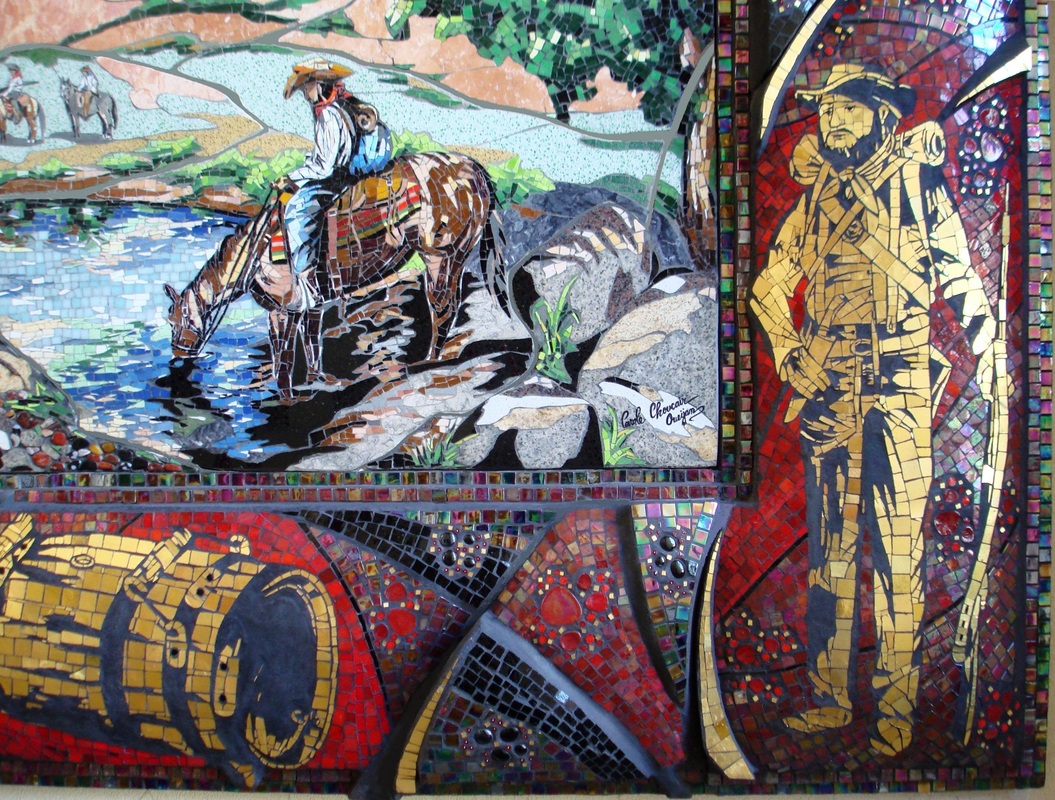The Emigrant Trail
Title: The Emigrant Trail
Size: 84 x 120 x 5 inches
Medium: Mosaic: Smalti, 24 karat gold Smalti, marble, granite, Temecula granite, Cristallino, Millefiori, iridescent tile, Metallic Vitreous tile, glass gems, glass pebbles, pebbles and grout.
Technique: Byzantine indirect technique
Location: Old Town Temecula Civic Center, Temecula, CA
Year: December, 2010
This mural is about the history of Temecula and the significance of the Emigrant Trail in the City's growth from 1847 to 1858. The City was looking for art that was forever and touchable. Mosaic was clearly the answer.
My idea was to create a mosaic that would look like an old painting of a historic scene with a bas-relief frame. The frame includes images from before, during, and after this time period, and that are made out of 24 karat gold tiles in remembrance of the Gold Rush Era.
I was happy to learn so much in this project both in research and execution.
Size: 84 x 120 x 5 inches
Medium: Mosaic: Smalti, 24 karat gold Smalti, marble, granite, Temecula granite, Cristallino, Millefiori, iridescent tile, Metallic Vitreous tile, glass gems, glass pebbles, pebbles and grout.
Technique: Byzantine indirect technique
Location: Old Town Temecula Civic Center, Temecula, CA
Year: December, 2010
This mural is about the history of Temecula and the significance of the Emigrant Trail in the City's growth from 1847 to 1858. The City was looking for art that was forever and touchable. Mosaic was clearly the answer.
My idea was to create a mosaic that would look like an old painting of a historic scene with a bas-relief frame. The frame includes images from before, during, and after this time period, and that are made out of 24 karat gold tiles in remembrance of the Gold Rush Era.
I was happy to learn so much in this project both in research and execution.
The Wolf Store was a stage stop on the Southern Emigrant Trail one of few stage stops still standing
A scene of those pioneers coming to California, traveling by Cover Wagons, horses, mules, oxen or walking.
Stagecoach from the Butterfield stage, used after the Covered wagon period. Other stagelines used different routes; but Butterfield Overland Stage used the Southern Emigrant Trail
the Pechanga Great Oak tree
Tools from Temecula Museum: Hay Bale Saw, Metal Bucket, and Hand sickle
The unpolished gray granite of the roks was taken from Temecula’s historic quarry
Broad Ax and Apple Butter Paddle
Wooden barrel for carrying water on a wagon
"Native Americans were the creators of the earliest trails across California. Spanish explorers and missionaries would later follow these same trails, many of which would become part of the Southern Emigrant Trail. Between about 1820 and 1846, a relatively small number of trappers, hunters, and explorers used these trails. However, the Southern Emigrant Trail was heavily used between 1846 and 1880s and some of today’s highways still follow sections of the original trail."
Dr. Ann Miller
Dr. Ann Miller


















